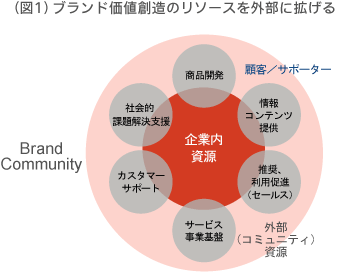Up until now, we've explained the contemporary approach of viewing brands as tangible and intangible "community platforms" that co-create value with customers and fans through on-site actions, calling it "verb branding." This involves connecting directly with visible individuals and communities, not invisible targets. It also means transforming conventional marketing wisdom and frameworks.
While digital marketing techniques are gaining global prominence today, this should be understood not merely as advertising technology or media perspectives, but as a shift in mid-to-long-term business and marketing strategy toward "directly engaging with customers and consumers to co-create value."
For example, what leading brands creating innovative value come to mind today? Many of them maintain direct customer touchpoints through direct services, manufacturing-retail models, or the platformization of products themselves. They generate differentiated brand experiences while leveraging customer feedback and co-creation of value as their strengths.
More advanced brands are connecting customers and fans in unprecedented ways to create new "community value." They are strengthening bonds and collaborations with users while supporting individual goal achievement and solving social challenges, thereby making consumption and its sharing more meaningful.
 This means expanding the resources for business and brand value creation—such as product development, brand content creation, sales, customer support, and social initiatives—beyond internal company resources. It involves engaging customers and supporters to extend these resources externally (Figure 1). In the coming era, the extent to which a company can build such community resources outside its walls will become a crucial key to differentiation for both the company and its brand.
This means expanding the resources for business and brand value creation—such as product development, brand content creation, sales, customer support, and social initiatives—beyond internal company resources. It involves engaging customers and supporters to extend these resources externally (Figure 1). In the coming era, the extent to which a company can build such community resources outside its walls will become a crucial key to differentiation for both the company and its brand.
Engaging directly with customers and consumers whose faces you can see goes beyond communication and channel strategy; it leads to rethinking marketing strategy with a fundamentally different approach. While "Brand Community Strategy in the Social Era" explains this paradigm shift with case studies, here we outline four contemporary hints for strengthening brand value.
1.Adopt a mindset that connects customers, not one that segments the market
While market segmentation remains a fundamental marketing activity, today's focus is increasingly shifting toward market connections. The phenomenon known as chain consumption, where unexpected target groups are reached beyond initial assumptions, is increasing. Even in brands like fashion, beverages/food, and smartphones, major hit products have emerged from customer chain consumption. When expanding the market based on a brand, opportunities arise by strategically designing themes, interests, and activities that connect target groups with different attributes, thereby creating ripple effects.
2.Visualizing customer connections and making the value customers create explicit
Brands embraced by many consumers invariably create value within consumption scenarios through their customers themselves. Such brands have the potential to expand their strengths beyond product value by visualizing the essence of brand equity—the "bond with customers"—rather than focusing solely on sales or market share. Particularly, by winning over "creators" who generate value themselves and influential "influencers," brands can close the distance with users, create ripple effects of recommendations and support, and achieve unparalleled brand value enhancement and differentiation.
3.Shifting the Narrative from Brand Value Communication to Creating Shared Value with Consumers
When envisioning customers and communities with recognizable faces, the brand's communication approach naturally evolves. Rather than monologues that unilaterally imprint the brand name or value, shifting the communication style to dialogues that align with customer and consumer interests and expand topics should garner greater empathy and support.
What exactly does this dialogue entail?
(Figure 2) shows examples of themes, but simply put: if you want customers to talk about you, start by talking about them. Note that this is a communication approach independent of specific media like mass advertising or social media.
4.From Impressions (Exposure) to Customer Expressions (Voices)
Ultimately, it means enabling customers to speak about the brand themselves through content and activities they can share and participate in. Today, consumers' own information sharing and share of voice (volume of discussion) are major sources generating brand power and vitality. Successfully creating mechanisms that shift from corporate-driven messaging to customer-generated topics and content sharing offers the chance to build brand equity far exceeding marketing investment and amplify sustained effects.
Thus, the goal of "Brand Community Strategy" is to build a system that creates new businesses and value by establishing a relationship foundation with consumers and stakeholders, whether digital or real, and leveraging their power. Of course, this requires defining brand value as a "verb" that resonates with customers and makes them want to participate.
So, what is your brand's "verb"?
※Diamond Online features a discussion article introducing various case studies related to this topic. Please take a look if you're interested.

 This means expanding the resources for business and brand value creation—such as product development, brand content creation, sales, customer support, and social initiatives—beyond internal company resources. It involves engaging customers and supporters to extend these resources externally (Figure 1). In the coming era, the extent to which a company can build such community resources outside its walls will become a crucial key to differentiation for both the company and its brand.
This means expanding the resources for business and brand value creation—such as product development, brand content creation, sales, customer support, and social initiatives—beyond internal company resources. It involves engaging customers and supporters to extend these resources externally (Figure 1). In the coming era, the extent to which a company can build such community resources outside its walls will become a crucial key to differentiation for both the company and its brand.
